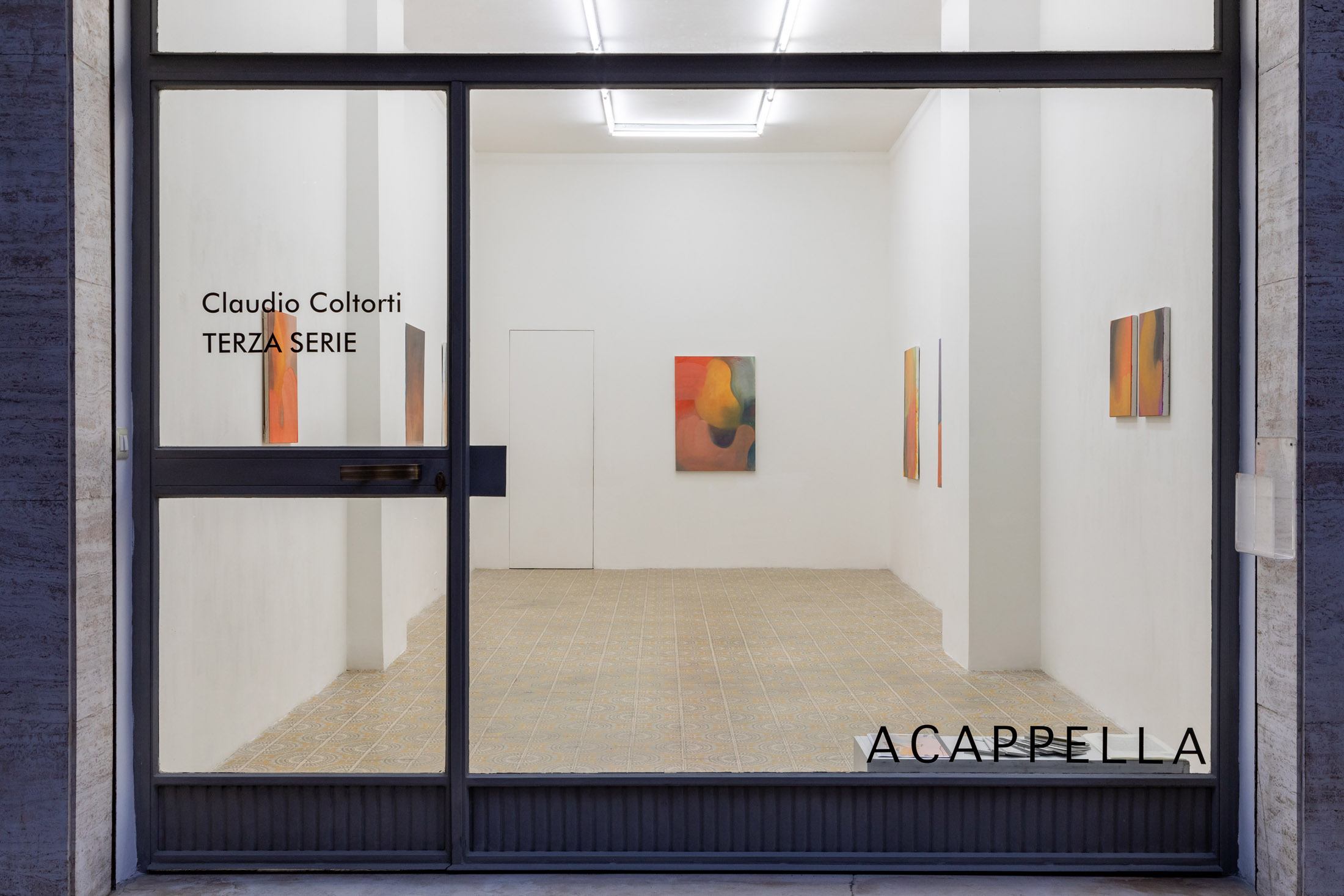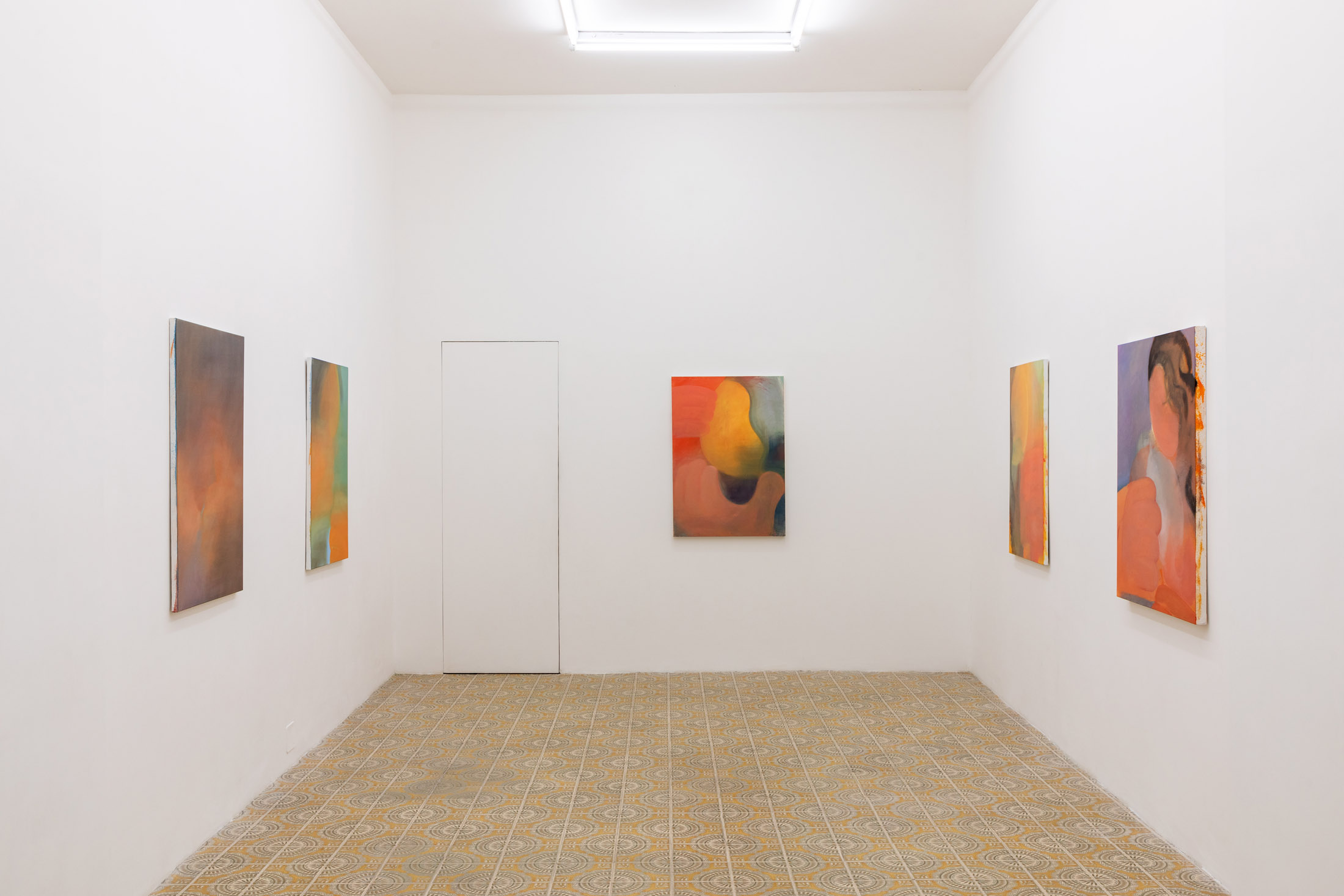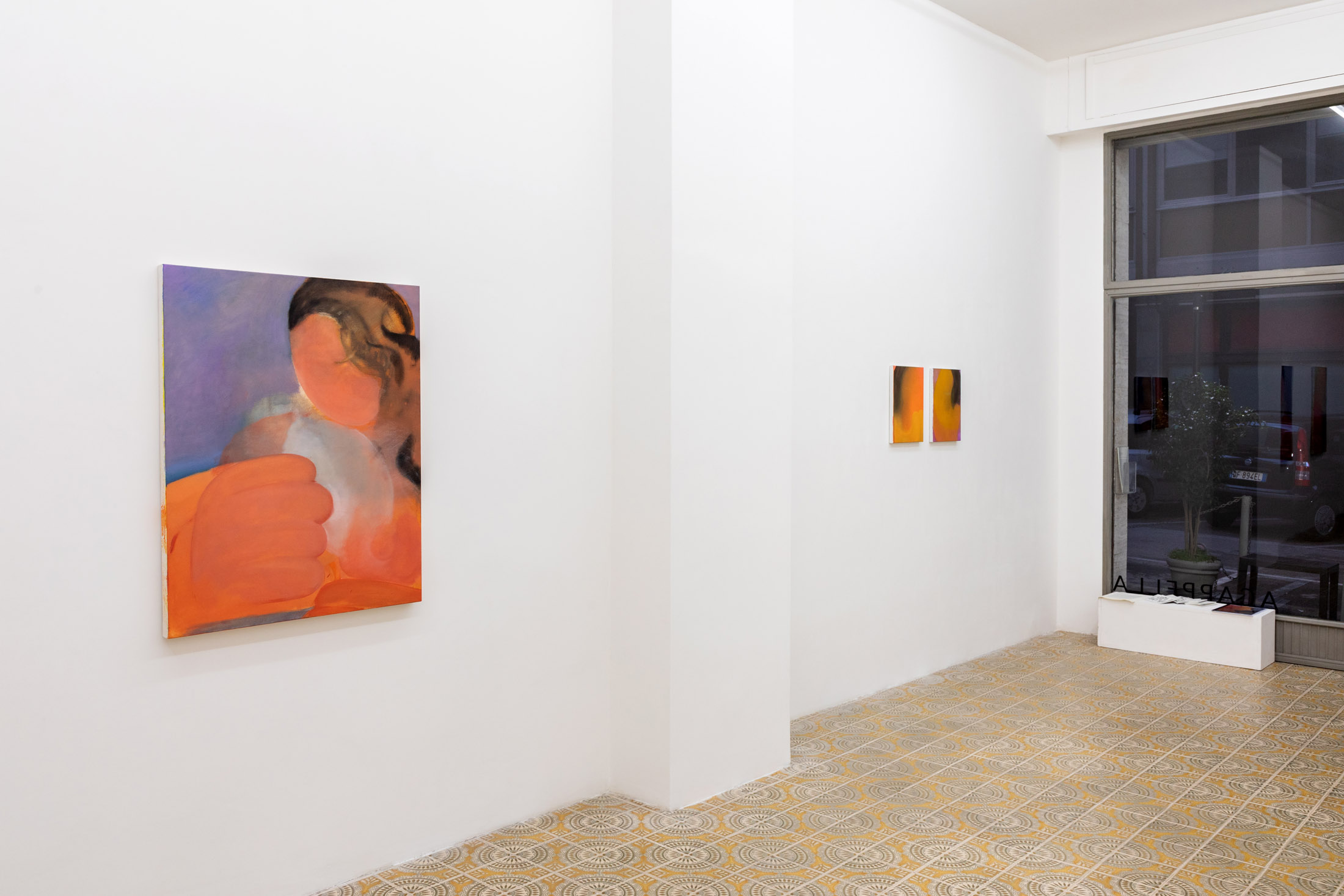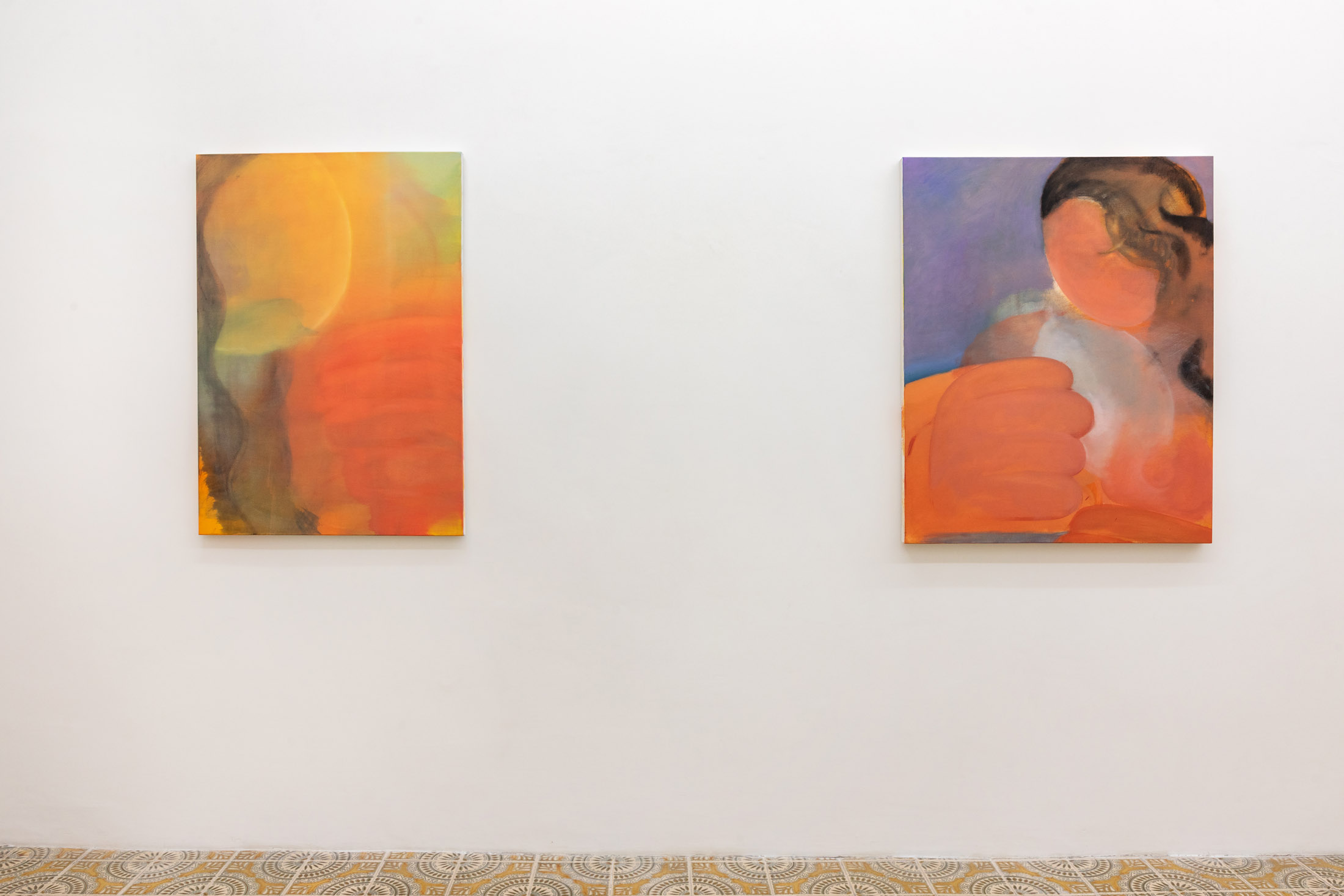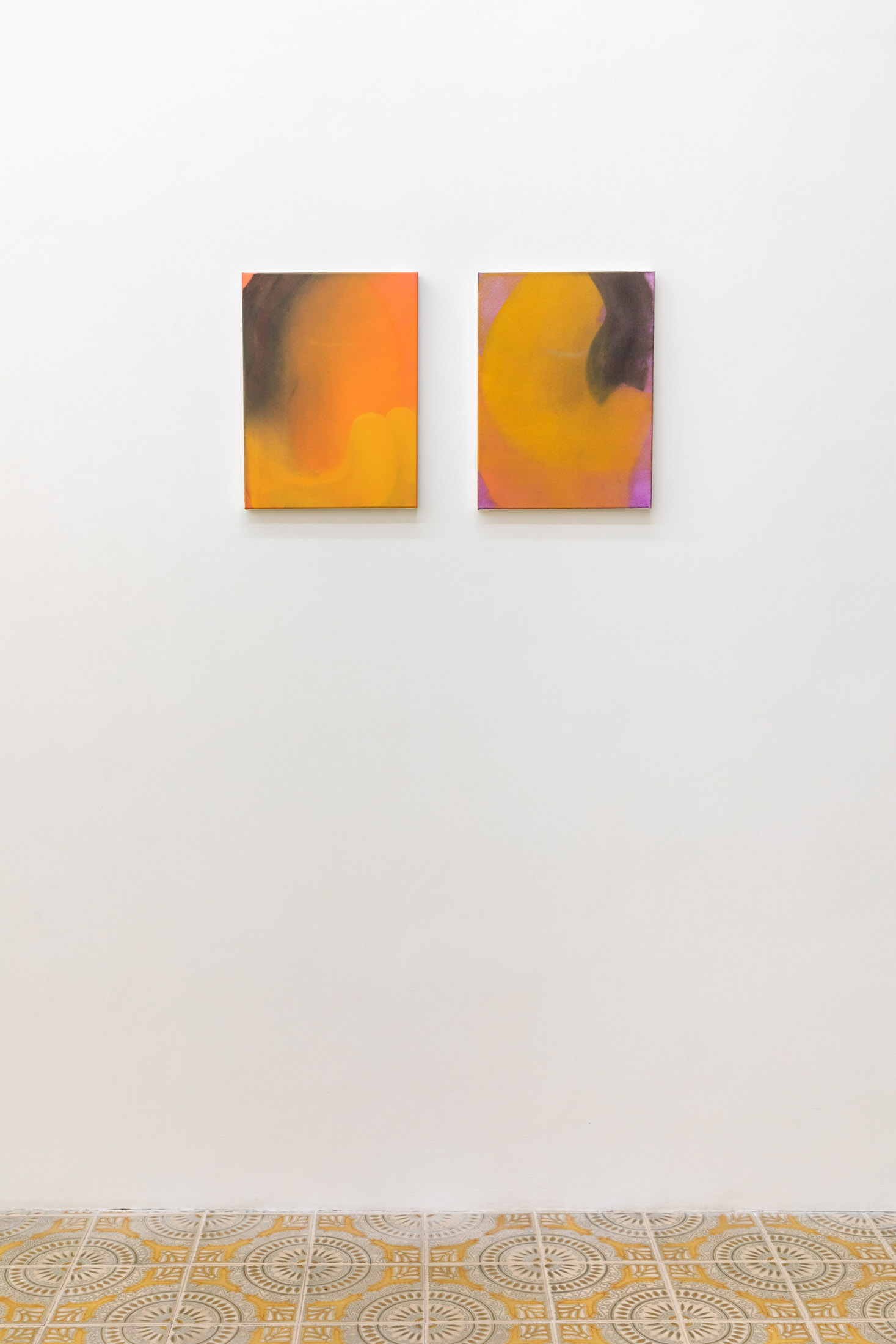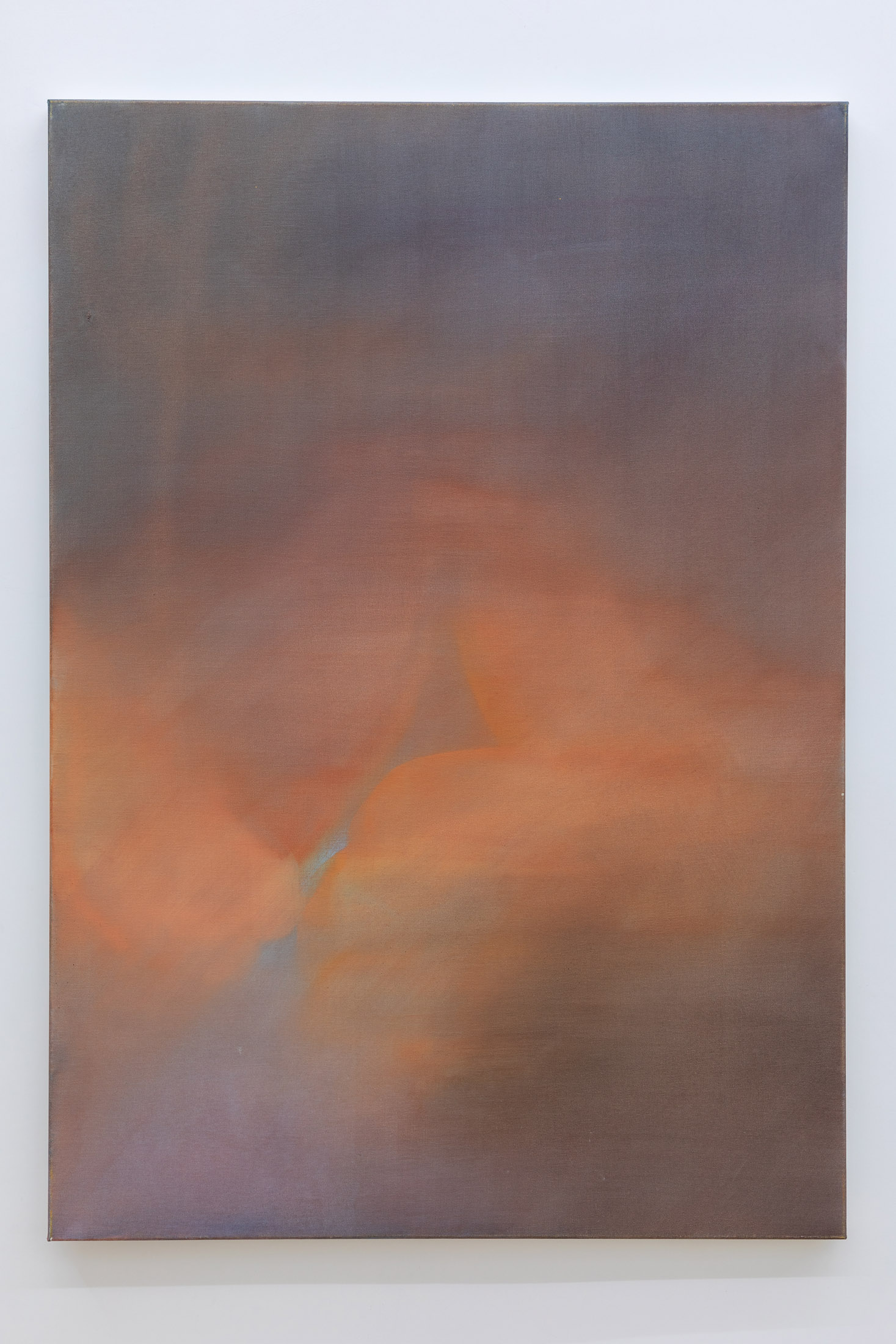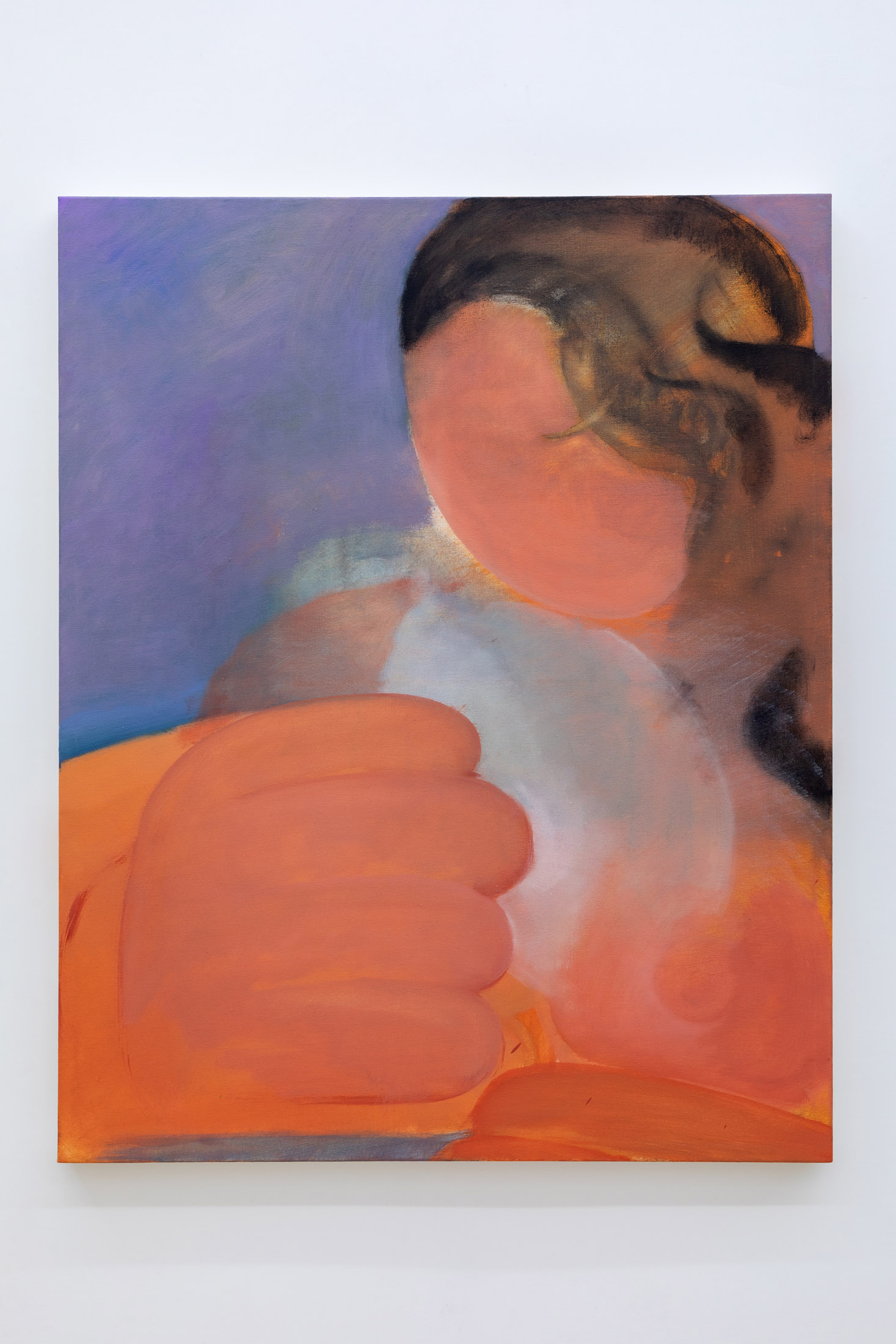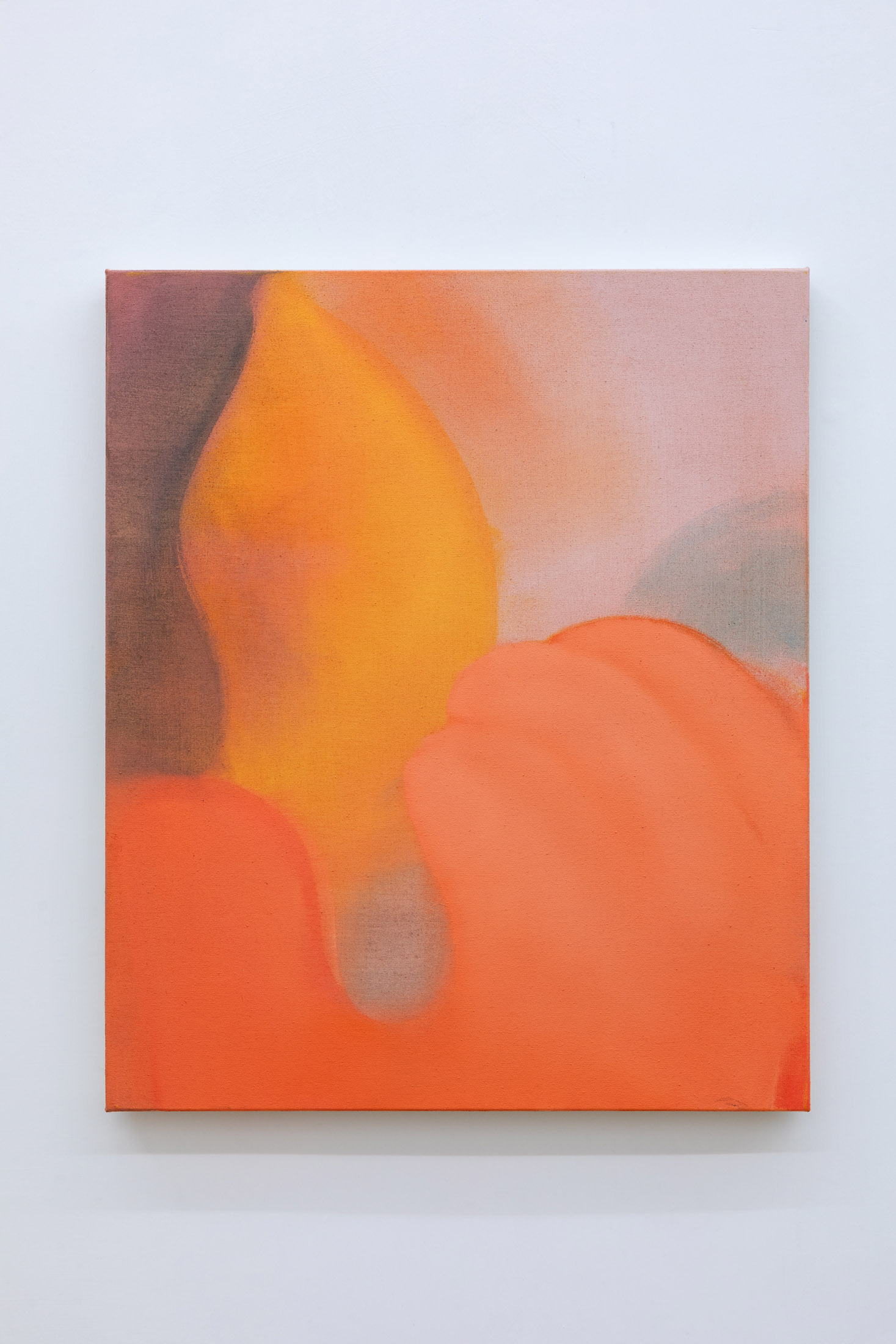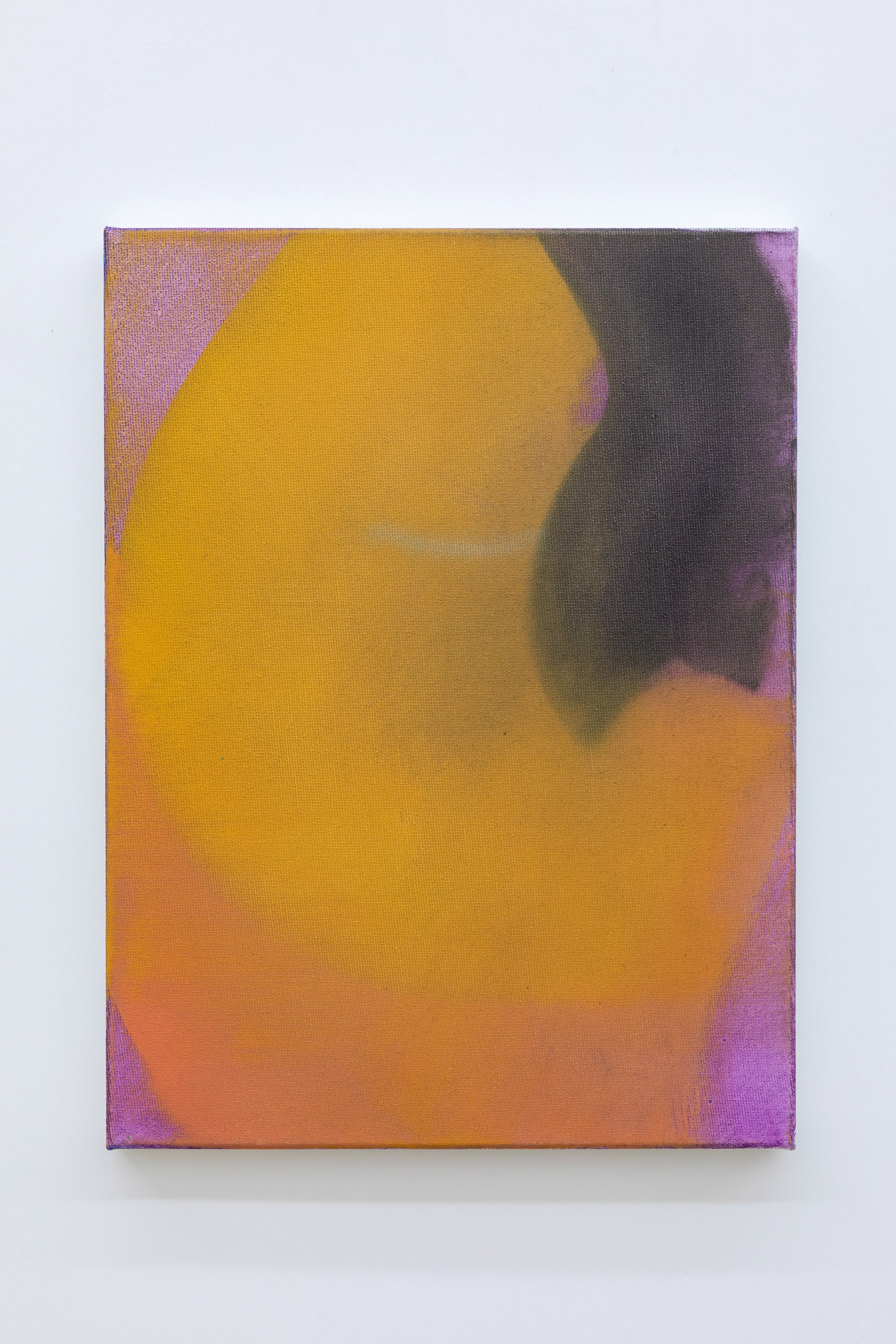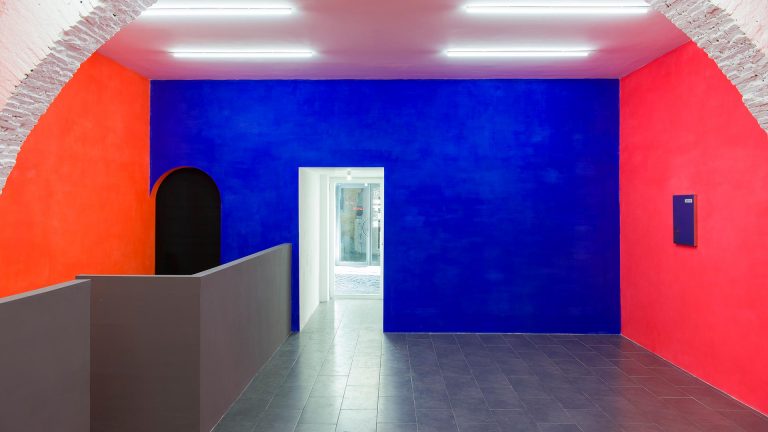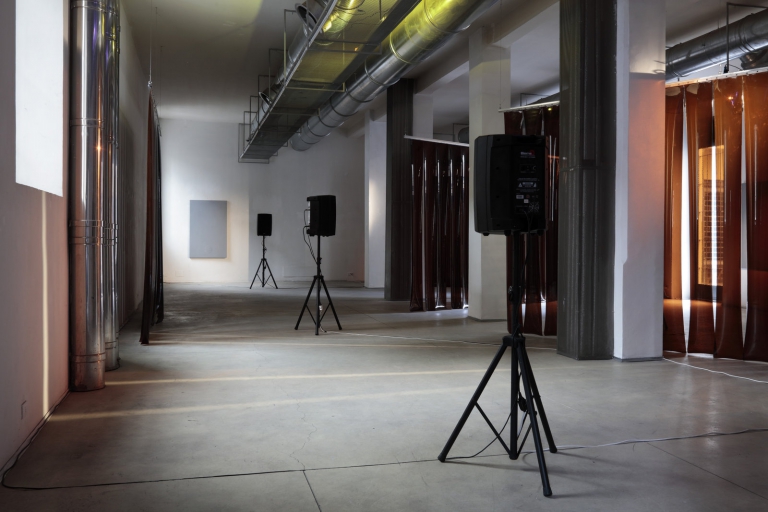Artist: Claudio Coltorti
Exhibition title: Terza Serie
Venue: Acappella, Naples, Italy
Date: January 20 – March 5, 2024
Photography: © Danilo Donzelli / all images copyright and courtesy of the artist and Acappella, Naples
What the reality of the wounds must mean. On Third Series by Claudio Coltorti.
After Tele and Dialogo (2020, 2022), Claudio Coltorti concludes an ideal trilogy for the Acappella Gallery with the Terza Serie oils, which contain a true theory of decay. The emphasis must be placed on the first and not on the second term, to underline the combinatorial potential with which the artist assembles and exchanges forms, styles and tones of his previous production, bringing them to saturation and making them shine like an explosive. The realism through accumulation that guaranteed the recognizability of Coltorti’s work is required here: as in a sedimentary process of erosion, the representation is now entrusted almost exclusively to colour, from which emerge – precisely similar to clasts or solutes in meteoric degradation – those which are no longer figures but emblems. In this regard, we could speak – as in the case of the median Rothko, poised between mythical method and abstractionism – of a transitional painting (we use here the clinical sense provided by Winnicott), in which the two angles (figurative and non-figurative) are included in the same form. But upon closer inspection the dynamics do not concern two tensive forces inherent to the composition alone, but two much broader spectrums, that of life and death (Rothko: «I don’t think it has ever been a question of being figurative or abstract. Rather it is a question of placing end this silence and this solitude, to expand your chest and breathe again.” Third Series is therefore the introduction into the Colturtian diagram not so much of the death drive, but of the awareness of death (all serious art, ultimately, can be reduced to this: a meditation on the sense of finitude, and on how a collective subject comes to terms with his future extinction, «affair with the Beast»). In this sense, Philip Guston’s lesson, which for Coltorti was something more than a reference, is starting to be overcome (we are not talking about value judgments but about dialectical procedures). The real is no longer sublimated from below, in a sometimes cartoonish rendering, which prefers the mediation of screens or expanded figurative prostheses. The real is now nebulised, and presents itself as a stain, an indistinctness, a patch – it renounces recognizable diaphragms or crutches and manifests itself as a slip, as a lack. Hence the tragic character of the series, its inorganic smell, made sustainable through the complex organization of color. But a tragedy that is still partly (perhaps removed from the canvas burdened by a thick industrial blanket that impedes vision – or rather, the impediment is vision itself) virtual, bounced back. At a first analysis, at least two uses of color are recognised: one affirmative, almost tautological, as in the now canonical yellow or in a new, particularly bright purplish blue; and a second, much more pervasive, where the color seems threatened, and appears as the reflection of something else, the memory of a color, a gradation manipulated by atmospheric agents. This is the case of purple, or orange poised between light or opacity, or again, the aqua green (is it really an aqua green? I don’t know) typical of Coltorti, who this time seems undecided between multiple outcomes, reduced both qualitatively and quantitatively. , but still viscous and pervasive like mold.
What survives the chromatic catastrophe is a silent allegory. They are unrelated details that survived other phases of the work, which are re-mediated here, in a process that is meta-pictorial from its origins. These figures or parts of figures no longer seem to have the lively meaning, of intimacy and human warmth, with which they were covered in the other series, but nevertheless they exist, even if they are excluded from any taxonomy or hierarchy of values. What remains to be asked, rather, and I realize that this doubt risks contradicting what has been said so far (but art is precisely that space of ambiguity in which something can be affirmed and denied at the same time, and at the same time the critic must always maintain the modesty of not understanding), if rather the opposite is not true, that is, that it was not the color that contracted the figurative dimension, making it evacuate, like the face of a stranger seen by a short-sighted person, but rather that it exploded, has intensified to the point of giving rise to a universe that is no longer (not only) human.
All the time I was observing these canvases, in the artist’s studio at the Sanità, I had in mind a famous poem by Sereni, The Beach, placed at the conclusion of The Human Instruments. I report an excerpt (cutting and sewing): «But today / on this stretch of beach never before visited / those solar patches… […]. The dead are not what goes to waste from day to day, but those/ patches of non-existence, lime or ash/ ready to become movement and light. Don’t/doubt […] – they will speak.” While, perpetually distracted, I repeated these words in my head and wrote notes on a messaging app, the son of a friend present in the studio pointed to a patch of depigmented, bleached, erased, color-eroded canvas, asking what it was. A typo, a detail in progress, nothing more, which however struck him more than anything that was painted. It was also, I am convinced as the days pass, the crack, the access point to this phase of Coltorti’s work.
-Fabrizio Maria Spinelli
Claudio Coltorti, Terza Serie, 2024, exhibition view, Acappella, Naples
Claudio Coltorti, Terza Serie, 2024, exhibition view, Acappella, Naples
Claudio Coltorti, Terza Serie, 2024, exhibition view, Acappella, Naples
Claudio Coltorti, Terza Serie, 2024, exhibition view, Acappella, Naples
Claudio Coltorti, Terza Serie, 2024, exhibition view, Acappella, Naples
Claudio Coltorti, Terza Serie, 2024, exhibition view, Acappella, Naples
Claudio Coltorti, Terza Serie, 2024, exhibition view, Acappella, Naples
Claudio Coltorti, Terza Serie, 2024, exhibition view, Acappella, Naples
Claudio Coltorti, Terza Serie, 2024, exhibition view, Acappella, Naples
Claudio Coltorti, Terza Serie, 2024, exhibition view, Acappella, Naples
Claudio Coltorti, Terza Serie, 2024, exhibition view, Acappella, Naples
Claudio Coltorti, Fumo Industriale, 2024, oil on canvas, 100 x 70 cm
Claudio Coltorti, Donna Nuvola sta scavando, 2024, oil on canvas, 100 x 70 cm
Claudio Coltorti, Donna Nuvola con Foglia di Basilico, 2024, oil on canvas, 100 x 70 cm
Claudio Coltorti, Corpo Libero, 2024, oil on canvas, 100 x 70 cm
Claudio Coltorti, Donna Nuvola, 2024, oil on canvas, 100 x 80 cm
Claudio Coltorti, Statti bene!, 2024, oil on canvas, 55 x 46 cm
Claudio Coltorti, Bacio a Volo a Santa Chiara, 2024, oil on canvas, 40,5 x 30,5 cm
Claudio Coltorti, Bacio a Volo a Santa Chiara, 2024, oil on canvas, 40,5 x 30,5 cm
Claudio Coltorti, Bacio a Volo a Santa Chiara, 2024, oil on canvas, 40,5 x 30,5 cm


